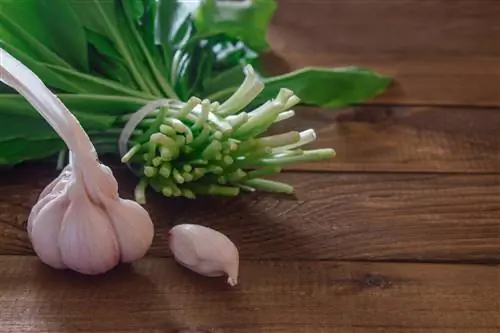- Author admin [email protected].
- Public 2023-12-16 16:46.
- Last modified 2025-01-23 11:20.
Angelica (Angelica archangelica) has been used as a sought-after medicinal plant in the far north for many centuries. The Vikings once brought the umbel plant with them from Scandinavia and also introduced it to Central Europe. Angelica was once considered a remedy against the plague and all sorts of other diseases; bitters and other bitter liqueurs were also made from its roots. The plant can be recognized by its typical, pleasant smell.

What does angelica smell like?
The angelica root (Angelica archangelica) exudes a sweet and spicy smell that is reminiscent of stomach bitters. This pleasant scent comes from the essential oils contained in the plant and used for their healing properties.
Spicy and pleasant scent
Either the root or the rhizome, but also the whole plant, its fruits and the essential oil (Oleum Angelicae) made from it are used as remedies, although the carefully dried roots are usually used. All parts of the plant exude a sweet and very spicy smell, which can later turn bitter.
Ingredients of Angelica
The intense smell of angelica comes from the essential oils that are contained in the plant in concentrations between 0.3 and 1.5 percent. Angelica also contains bitter substances, coumarin derivatives, furanocoumarins, coumarins as well as resins and sugar. So-called macrocyclic lactones are responsible for the characteristic smell, which are reminiscent of a stomach bitter - for which angelica is still often used today. However, the intense smell of the pure essential oil dissipates very quickly.
Areas of application
In traditional folk medicine, angelica was used against numerous illnesses, but today it is primarily used against stomach and intestinal problems (which also gave the plant the nickname “angel's fart”) such as stomach pain, a feeling of fullness or loss of appetite, as well as colds and so on Cough. Well-known stomach and bitter liqueurs such as Klosterfrau Melissengeist, Boonekamp, Chartreuse and Cointreau contain extracts from the root of angelica.
Be careful of the sun
Anyone who uses angelica as a remedy should, as a precaution, avoid sunbathing or visiting the tanning salon. The furanocoumarins contained in combination with prolonged contact with the sun can trigger skin irritations, including blistering dermatitis and allergic reactions. The same applies to wild Angelica, which can be dangerous for bathers - contact with the fresh juice can cause skin rashes similar to burns.
Tip
If you want to collect angelica in the wild, then pay close attention to the important identifying characteristics, as the plant can quickly be confused with the deadly poisonous water hemlock.






